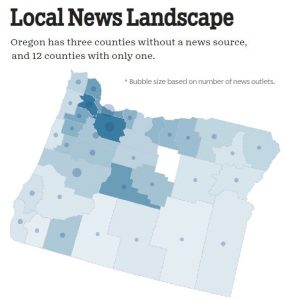Ducks to join Big Ten in 2024
4 min read
from the University of Oregon and staff reports
The University of Oregon will join the Big Ten Conference in 2024.
“I’m thrilled that the University of Oregon has the opportunity to join the nation’s preeminent academic-athletic conference,” said UO President Karl Scholz. “Our student-athletes will participate at the highest level of collegiate athletic competition, and our alumni, friends and fans will be able to carry the spirit of Oregon across the country.”
The Big Ten Conference voted Aug. 4 to accept Oregon effective August 2, 2024. The UO will remain in the Pac-12 Conference for the duration of the Pac-12’s existing media rights agreements.
The move will benefit UO students and faculty, said Scholz, who, while dean and provost at the University of Wisconsin-Madison, helped shape and observed the benefits of the Big Ten Academic Alliance over the last decade. “The connections we will make with some of the leading research institutions in the world will provide new opportunities for our students, staff, faculty, and university stakeholders,” said Scholz. “The agreement we’ve reached with the Big Ten Conference will help ensure a bright future for the University of Oregon. We are grateful and look forward to a long, robust partnership.”
In coming years, the UO will prioritize the long-held traditions, including competition across all sports with Oregon State University. The alliance puts UO student-athletes on a national stage, said UO Director of Intercollegiate Athletics Rob Mullens.
“Accepting membership into the Big Ten Conference is a transformational opportunity for the University of Oregon to change the short and long-term trajectory of our university and athletics department,” said Mullens. “The stability and exposure of joining the Big Ten is of great benefit to the University of Oregon, and we are grateful to the Big Ten presidents and chancellors for accepting our application to join the conference. We look forward to the opportunity for our student-athletes to compete in this conference, which includes many of the best programs in the nation in every sport.”
With less than two months on the job as the UO’s 19th president, Scholz has already demonstrated leadership through the evolving landscape of changing college athletics. “President Scholz’s calm and insightful style have been invaluable during the conference realignment process and leading to the final deal,” said Steve Holwerda, chair of the Board of Trustees. “We are fortunate to have him at our helm.”
Oregon joins Washington, UCLA, and USC in moving to the Big Ten. The conference includes (in order of largest to smallest student population) Ohio State, Illinois, Minnesota, Rutgers, Michigan State, Wisconsin, Michigan, Penn State, Purdue, Indiana, Maryland, Iowa, Nebraska, and Northwestern.
Four other Pac-12 teams—Utah, Arizona, Arizona State and Colorado—will move to the Big 12 Conference, joining (in alphabetical order) Baylor, Brigham Young, Central Florida, Cincinnati, Houston, Iowa State, Kansas, Kansas State, Oklahoma State, Texas Christian, Texas Tech, and West Virginia.
Eugene city councilors discussed potential impacts from such a move over a year ago, comparing the population of Eugene with other Big Ten towns.
“Councilor (Greg) Evans brought up something in a conversation with me the other day,” Councilor Mike Clark said in July 2022. “If the University (of Oregon) succeeds in some manner of conference change, there are other conferences with student populations in the 50,000 range, not the 23,000 range. And I suspect that if our conference for the University of Oregon changes, that’s going to have a significant effect on housing in our community. That’s probably an understatement.”
With a student enrollment of 23,202 students, Oregon currently ranks next to last among Big Ten schools, just ahead of Northwestern. Ohio State and Washington top the list with over 60,000 students.
Eight of the 18 Big Ten schools are in college towns, such as State College, Pennsylvania; Iowa City; and West Lafayette and Bloomington, Indiana. With others in the New York, Los Angeles, Chicago, and Washington D.C. metro areas, the Eugene-Springfield metro ranks 11th in population among the 18 schools.
Autzen Stadium, with a capacity of 54,000, is comparable to football stadiums in Indiana, Minnesota, Rutgers, Maryland, and Northwestern. However, those stadiums are only about half the size of the largest Big Ten football stadiums. Michigan, Penn State, and Ohio State hold over 100,000 fans.
With the school’s admission, Oregon will also join the Big Ten Academic Alliance (BTAA), a consortium of world-class research institutions dedicated to advancing their academic missions. The academic alliance offers the Big Ten Open Books program, which shares fully accessible, trusted books from leading university presses under a Creative Commons license, and the BIG Collection, a project that manages the separate collections of Big Ten university libraries as a single collection.






